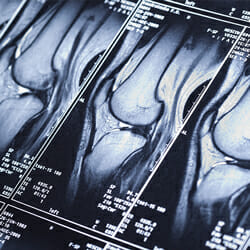Tissue donation
Donation is a gift that saves and heals thousands of lives each year. Because the criteria for donating tissue is different than organ donation, many more people have the opportunity to be tissue donors.
In addition to the main organs, corneas or whole eyes, bone, skin, tendons, ligaments, heart valves and other cardiovascular tissues can be transplanted. Great care is taken in the recovery of tissues to ensure presentation of the body for funeral purposes. Generally, donation will not delay funeral arrangements, and tissue donation does not interfere with an open-casket funeral for the donor.


Tissues that can be donated
-

Corneas/eyes -

Bone -

Skin -

Tendons -

Ligaments -

Heart Valves
The Process
How the process works
Donation is a well-orchestrated and time-sensitive process, with various partners helping along the way to ensure every opportunity to save and heal lives.
Explore the key steps of the donation process below:
-
Death occurs
Donation is only an option after death has occurred. Hospitals, Medical Examiners, Coroners and Hospice organizations notify LifeGift after a death has occurred to assess for donation potential.
-
Assess donation possibility
The deceased patient is assessed for suitability for tissue donation, based on criteria such as age, cause of death and medical history.
-
Authorization
LifeGift checks to see if the potential donor documented a lifetime decision about donation on the Donate Life Texas registry, national registry or other state registry if the person is from out-of-state. If the person is a registered donor, donation is authorized and LifeGift will share that information with the donor’s family. If the person did not make a lifetime decision, LifeGift will ask the family to make a decision on behalf of their loved one.
-
Gather information
The next-of-kin will need to go through a questionnaire with a LifeGift team member to gather medical and social history and information to help ensure the safety of donated tissues. The information is then reviewed to ensure the tissue is suitable for transplantation.
-
Recover and transplant tissue
If the tissues are suitable, they are carefully recovered by a skilled team. Recovered tissues are shared with our partners who prepare them as grafts for transplant. If the tissues cannot be used for transplant, certain tissues may still be donated for research.
Tissue donation process FAQs
Can an organ donor also be a tissue donor?
Yes. If a donor meets the criteria, both organs and tissues can be recovered at the same time. Eight lives can be saved through organ donation and countless others through tissue donation.
Can a donor have an open casket funeral after tissue donation?
Great care is taken during tissue recovery to ensure that a family’s chosen funeral or viewing plans are not disrupted by donation.
How are donated tissues commonly used?
A single tissue donor can enhance or save the lives of often more than 75 people. These people may be mothers, fathers, siblings, grandparents or someone’s child who are helped through the donation of different types of tissues. Tissue is used to replace bone, tendons and ligaments in people with cancer, joint disease, arthritis, reconstructive surgery after a mastectomy, major abdominal surgery and traumatic injury.
How do tissue transplants help people?
- Bone transplants can prevent amputation, rebuild facial structure, and may also be used in spinal and general orthopedic surgeries and oral procedures. Donated bone is used in specialized sizes and shapes to make these repairs.
- Heart valves are used to help reconstruct the poorly formed heart of a child or to replace a diseased or damaged heart valve of an adult or child. Donated vessels and valves can mean the difference between life and death to the recipients.
- Veins and arteries are recovered for transplantation to repair and restore circulation. Donated vessels are used to restore circulation in heart bypass surgeries and to avoid limb amputations.
- Corneas restores sight. All eye donations are coordinated and performed by local eye banks.
- Skin is primarily used as a “bandage” for adults and children who have lost their own skin through burns or surgery. It protects a patient from infection, minimizes pain and allows the time necessary for a patient’s own skin to grow again.
Have more questions? Check out our full donation FAQ page for more information.
Tissue transplantation is a team effort
Unlike donated organs, tissues need to be expertly prepared before they are able to be transplanted. That’s where our tissue partners join our process. These organizations are dedicated to quality, safety and medical advancement to maximize the life-changing impact of donated tissues.

